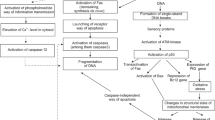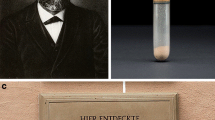Summary
8-MOP and UVA (PUVA) lead to a covalent bond of 8-MOP at the 5=6 position of thymine in DNA. These are, at least partly, the same positions involved in cyclobutane dimer formation after UVC irradiation, eliminated by excision repair. This study is done to obtain information about whether 8-MOP bonds induce repair processes and whether they interact with UVC-induced excision repair.
The incorporation of 3H-thymidine into the DNA of lymphocytes from 20 psoriatic patients under oral PUVA therapy as well as the uptake of T-5-uridine in the RNA was measured by the liquid scintillation technique. The lymphocytes under PUVA treatment show a significant increase in unscheduled DNS synthesis as compared with the control groups.
In isolated lymphocytes of nine healthy volunteers the unscheduled DNS-synthesis was measured in vitro under PUVA conditions (8-MOP 1μg/ml + 500 mJ UVA) and in controls. The replication was suppressed by hydroxyurea 2×10-3 M). A remarkable repair activity could by demonstrated under PUVA condition, but not by 8-MOP alone or selective UVA irradiation.
The PUVA-induced repair activity is, with a time delay, comparable to that induced by UVC. A combination of PUVA and UVC irradiation does not increase the repair activity. It seems that 8-MOP-DNA bonds and UVC-induced dimers occupy at least partly the same thymine molecules at the DNA and can both be eliminated by excision repair. Nevertheless, the unscheduled DNA synthesis after PUVA-dammages is delayed in comparison to that after UVC-irradiation.
Zusammenfassung
8-MOP wird durch UVA-Bestrahlung (PUVA-Bedingungen) kovalent an die 5=6 Doppelbindung von Thymin in der DNS gebunden. Es handelt sich teilweise um dieselben Stellen, die durch UVC-Bestrahlung Cyclobutandimere bilden und durch Reparaturvorgänge eliminiert und ersetzt werden (Excisionsrepair). Es stellt sich die Frage, ob 8-MOP-DNS Bindungsstellen ebenfalls Repairvorgänge auslösen und ob dabei Wechselwirkungen auf die UVC-induzierte Dimerexcision zu beachten sind.
An Lymphocyten von 20 Psoriatikern wurde während der oralen PUVA-Therapie der Einbau von 3H-Thymidin in die DNS und von T-5-Uridin in die RNS flüssigkeitsszintigraphisch gemessen. Dabei zeigen die Lymphocyten nach 8-MOP plus UVA (PUVA) eine signifikant erhöhte unprogrammierte DNS-Synthese gegenüber den Leerkontrollen und solchen mit 8-MOP allein.
An Lymphocyten von 9 gesunden Versuchspersonen wurden unter in vitro PUVA-Bedingungen (8-MOP 1μg/ml + 500 mJ UVA) und Kontrollen die unprogrammierte DNS-Synthese durch flüssigkeitsszintigraphische Messung des 3H-Thymidineinbaus in die DNS bestimmt. Hemmung der Replikation durch Zugabe von Hydroxyharnstoff 2×10-3 M. Eine Repairaktivität konnte nach PUVA-Bedingungen nachgewiesen werden, nicht aber nach 8-MOP oder UVA allein.
Die PUVA induzierte Repairaktivität ist vergleichbar mit derjenigen, die durch UVC-Bestrahlung induziert wird, ist aber zeitlich verzögert. Die Kombination von PUVA-Bedingugen und UVC-Bestrahlung zeigt keine Steigerung der Repairaktivität. Es scheint, daß 8-MOP-DNS-Bindungsstellen und UVC-induzierte Dimere mindestens teilweise dieselben Thyminmoleküle der DNS besetzen und beide durch Repair-Excision eliminiert werden können. Allerdings ist die unprogrammierte DNS-Synthese nach PUVA-Schäden verzögert gegenüber derjenigen nach UVC-Bestrahlung.
Similar content being viewed by others
Literatur
Bohnert, E., Asbach, W., Jung, E. G.: Replication und Reparatur epidermaler DNS; Einfluß von Lichtexposition und Alter. Arch. Dermatol. Forsch. 244, 40–44 (1972)
Bohnert, E., Jung, E. G.: Excisions-Reparatur in Lymphocyten von Psoriatikern. Arch. Dermatol. Forsch. 251, 317–323 (1975)
Bohnert, E., Bächtold, G., Lischka, G., Jung, E. G.: Wirkung von UVC und von 8-MOP + UVA auf die T-und B-Population menschlicher Lymphocyten in vitro. Arch. Dermatol. Res. 260, 63–70 (1977)
Boyce, R. P., Howard-Flanders, P.: Release of UV light-induced thymidine dimers from DNA in E. coli K12. Proc. Nat. Acad. Sci. 51, 293–300 (1964)
Bridges, B. A.: Genetic damage induced by 254 nm ultraviolet light in escherichia coli: 8-Methoxypsoralen as protective agent and repair inhibitor. Photochem. Photobiol. 14, 659–662 (1977)
Gschnait, F., Brenner, W., Wolff, K.: DNA Repair after UVB damage in PUVA treated skin. J. Invest. Dermatol. 70, 225–226 (1978)
Lischka, G., Bohnert, E., Bächtold, G., Jung, E. G.: Effects of 8-Methoxypsoralen (8-MOP) and UVA on human lymphocytes. Arch. Dermatol. Res. 259, 293–298 (1977)
Painter, R. B., Cleaver, J. E.: Repair replication, unscheduled DNA synthesis and the repair of mammalian cells. Radiat. Res. 37, 451–466 (1969)
Regan, J. D., Trosko, J. E., Carrier, W. L.: Evidence for excision of ultraviolet induced pyrimidine dimers from the DNA of human cells in vitro. Biophys. J. 8, 319–325 (1968)
Trosko, J. E., Krause, D., Isoun, M.: Sunlight-induced pyrimidine dimers in human cells in vitro. Nature 228, 358–359 (1970)
Author information
Authors and Affiliations
Rights and permissions
About this article
Cite this article
Bohnert, E., Badilatti, B., Sidler, P. et al. DNS-Repair von Lymphocyten nach 8-MOP + UVA und nach UVC. Arch Dermatol Res 264, 299–305 (1979). https://doi.org/10.1007/BF00412657
Received:
Issue Date:
DOI: https://doi.org/10.1007/BF00412657




